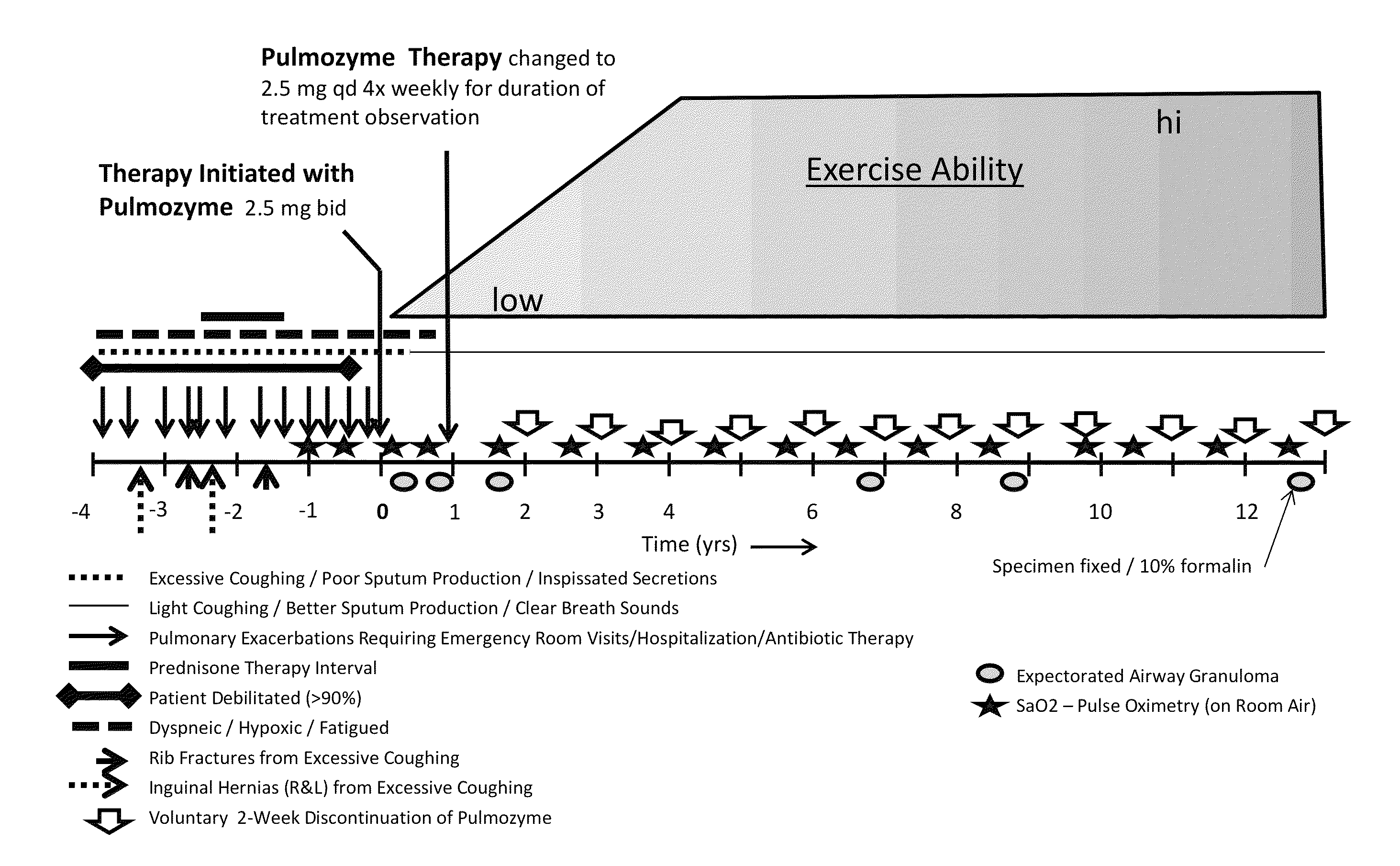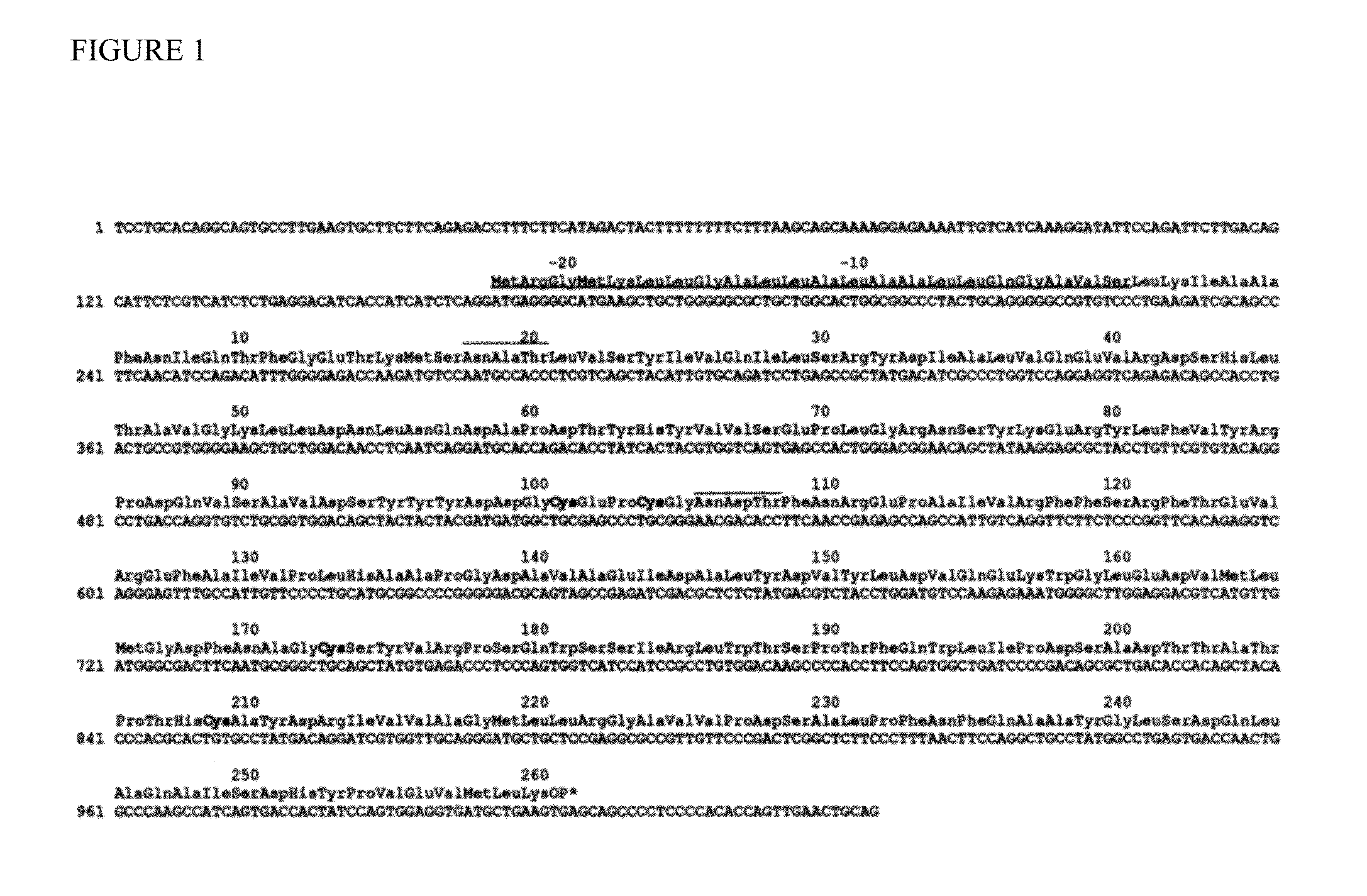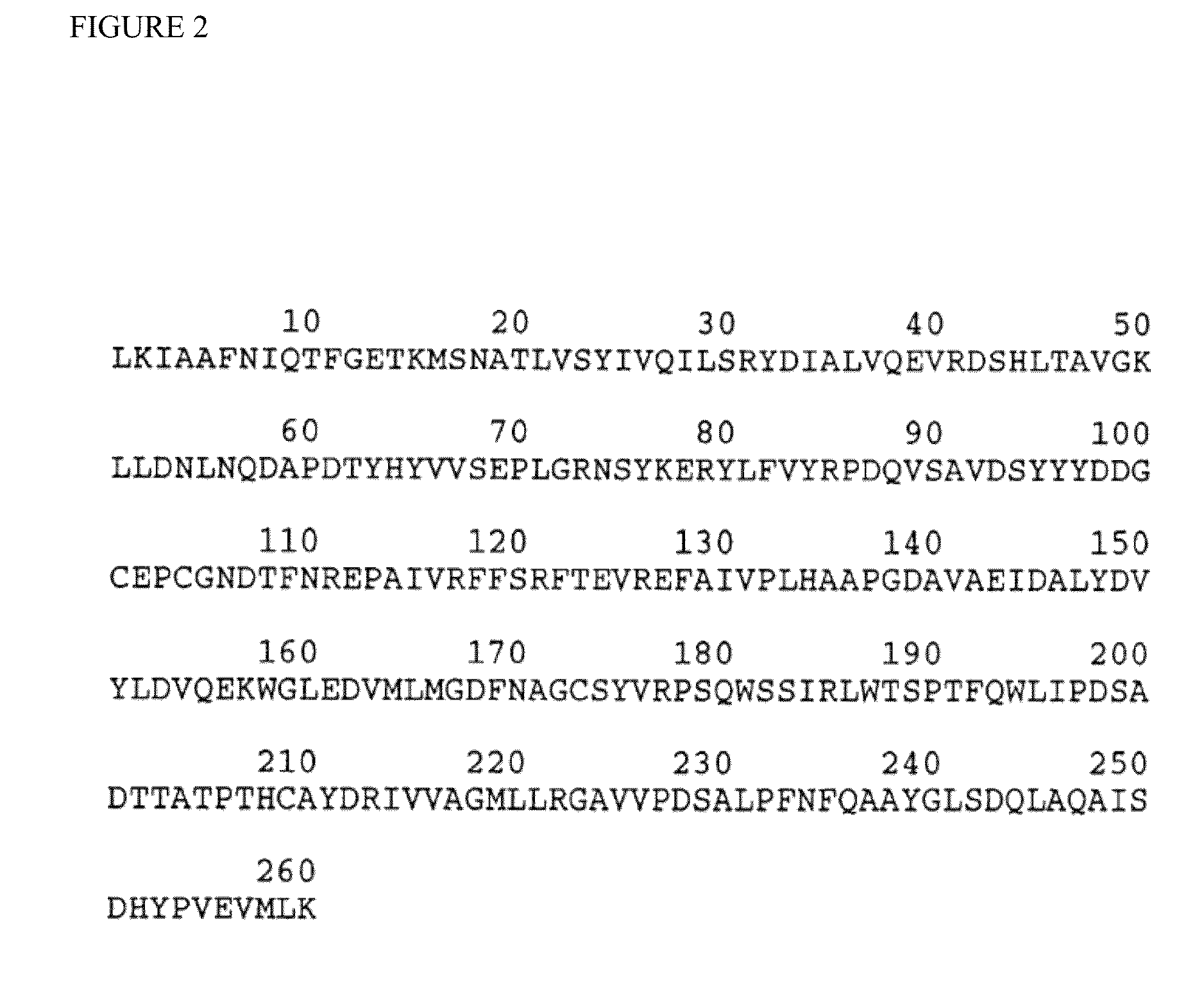Methods of treating pulmonary sarcoidosis
a pulmonary sarcoidosis and pulmonary sarcoidosis technology, applied in the direction of drug compositions, dispersed delivery, peptide/protein ingredients, etc., can solve the problems of pulmonary exacerbation, pulmonary exacerbation, pulmonary exacerbation, etc., to reduce the number and severity of bacterial infections, improve the health of pulmonary sarcoidosis patients, and reduce coughing
- Summary
- Abstract
- Description
- Claims
- Application Information
AI Technical Summary
Benefits of technology
Problems solved by technology
Method used
Image
Examples
example
[0075]A patient (middle aged female, African ancestry) had a history of debilitating chronic pulmonary sarcoidosis with multiple pulmonary exacerbations requiring antibiotic therapy yearly. Constant coughing resulted in fractured ribs and abdominal hernias. At times, the patient was bedridden, dyspneic, and could not climb stairs or walk more than 10 feet. Steroids had been prescribed by pulmonary specialists; however the side effects of steroid therapy (diabetes, weight gain, memory loss, mental confusion, crippling joint pain) were intolerable. The patient's pulmonary sarcoidosis was deemed ultimately refractory to steroid therapy, which was discontinued, leaving essentially no therapeutic options for this patient.
[0076]PULMOZYME® was prescribed to the patient by a licensed medical practitioner to initiate treatment. The patient responded to PULMOZYME® treatment as follows:
[0077]1. Adverse events relating to PULMOZYME®—none in more than 10 years of treatment;
[0078]2. Coughing, whe...
PUM
| Property | Measurement | Unit |
|---|---|---|
| pH | aaaaa | aaaaa |
| size | aaaaa | aaaaa |
| transmembrane conductance | aaaaa | aaaaa |
Abstract
Description
Claims
Application Information
 Login to View More
Login to View More - R&D
- Intellectual Property
- Life Sciences
- Materials
- Tech Scout
- Unparalleled Data Quality
- Higher Quality Content
- 60% Fewer Hallucinations
Browse by: Latest US Patents, China's latest patents, Technical Efficacy Thesaurus, Application Domain, Technology Topic, Popular Technical Reports.
© 2025 PatSnap. All rights reserved.Legal|Privacy policy|Modern Slavery Act Transparency Statement|Sitemap|About US| Contact US: help@patsnap.com



